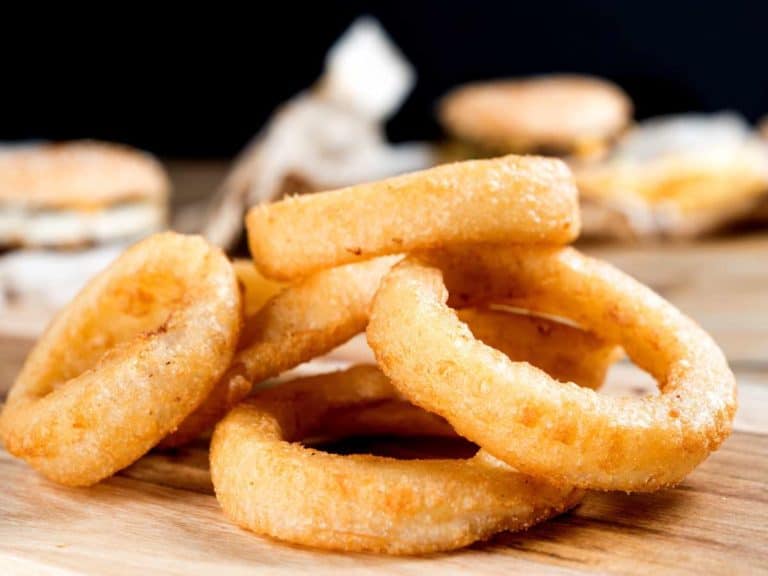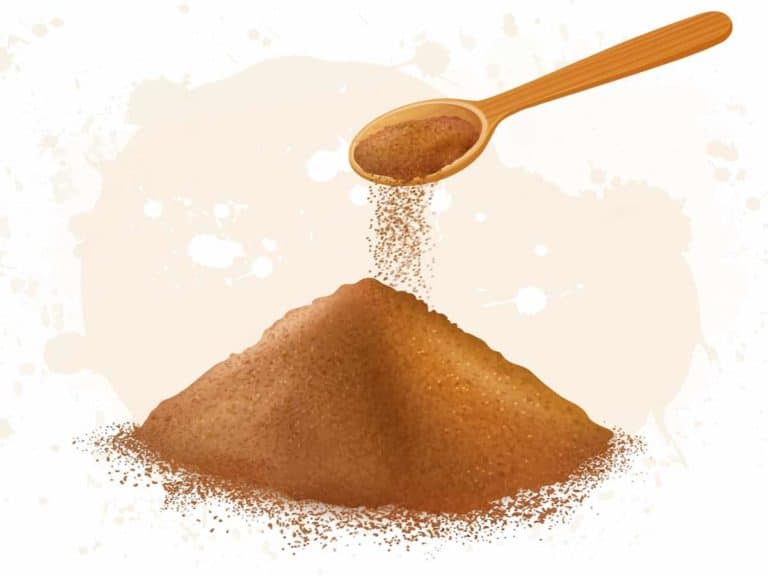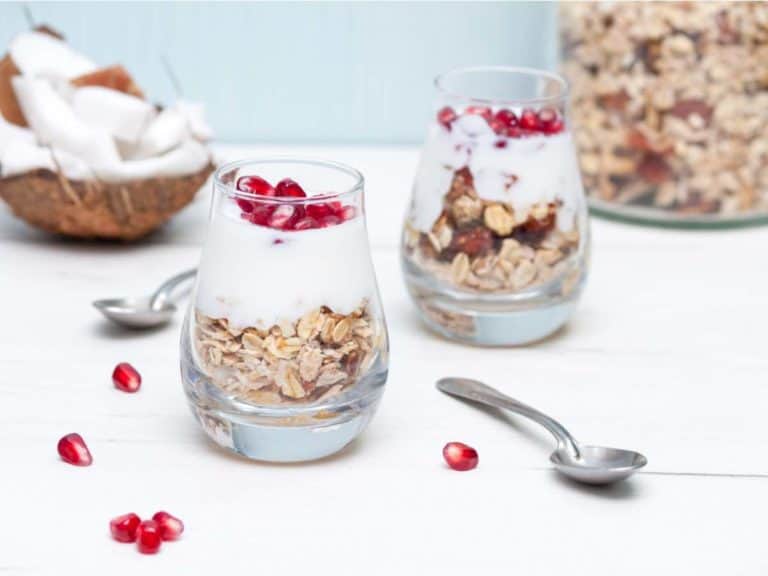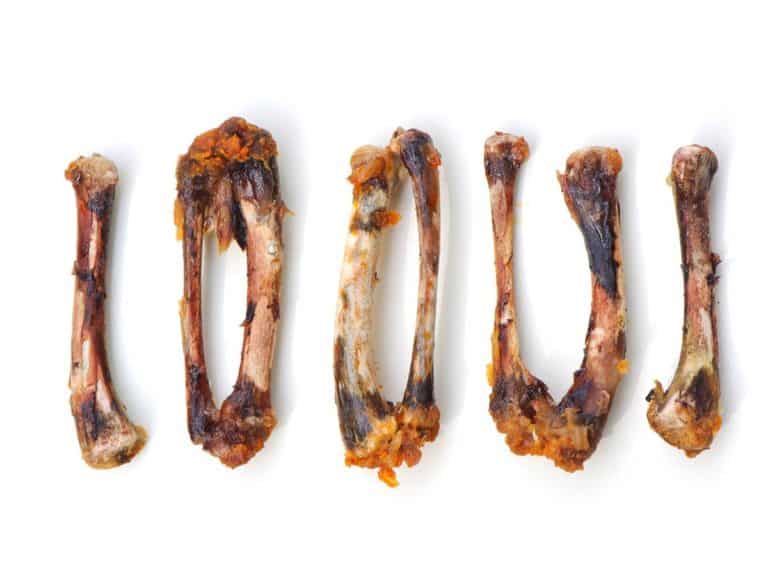Why Do Bodybuilders Eat Raw Eggs
Raw eggs. You’ve seen Sylvester Stallone and Arnold Schwarzenegger downing them before a hard training session. If you wanna be as tough as Rocky or ripped as Conan, you have to do raw eggs, right?
But do we really get more out of eggs by eating them raw?
Eggs in themselves are a near-perfect food. Up until the ’90s and even among some athletes today, there was a belief that you got more of that goodness by not cooking the eggs, as the heat would destroy some of their vitamins and proteins.
This was essential for bodybuilding, as the more protein you ingested the more material you had for your muscles. And the more natural your proteins, the better, right? Not quite.
While eggs are excellent for bodybuilding, there are two reasons why it’s better to have your eggs cooked instead of raw. First, the risk of catching salmonella infection. Second, a medical study in 1998 proved that you get more protein from cooked eggs than raw eggs. The study showed a 90% absorption of proteins from cooked eggs versus merely 50% from raw eggs.
But Rocky did it! And my old-school coach swears by it! How can raw eggs be bad?
Let’s get the Hollywood aspect out of the way first.
One reason Rocky was shown chugging down a tumbler of the raw egg was that there was indeed a belief that raw eggs were better for bodybuilding at that time (1976). This belief wasn’t just applied to athletes, it was applied as a general constitution-building idea for sickly children, the elderly, and convalescents – it was old-school folk knowledge.
The study disproving this was made in 1998, and apparently knowledge of the study’s results has yet to diffuse to all bodybuilding circles.
Second, and more important for the film, most of us are averse to raw food. Raw egg’s sliminess can be quite disgusting.
This is exactly why Rocky had to take them – it was to show how far he’d go to get back into fighting trim. Rocky’s liquid breakfast was symbolic of what a hero must go through for victory.

Now let’s talk about the science.
What are the benefits of eating eggs, and are there extra benefits for having them raw? What are the risks of eating raw eggs? Are there ways to reduce the risks of eating raw eggs? Read on to find out!
Why Eggs Are Great for Bodybuilding
Eggs are practically the perfect protein source for building muscle. They are packed with high-quality proteins, in fact, all eight of the amino acids needed for rebuilding and bulking up muscle after a workout, plus lots of vitamins, essential minerals, and choline. All this comes in an easily digestible package, much easier to digest than any red meat.
Why is the egg so packed with nutrients?
That’s one of the wonders of Nature.
An egg is so stuffed with goodness because this single-cell – yes, all that is just one cell – must contain everything needed to bring a new chicken to life. That means the material for its skeleton, its muscles, and organs, even its brain. All right, a chicken brain may not be much, but the good fats needed to make a brain are a great source of energy.
The typical chicken egg contains a little over 6 grams of protein, and 5 grams of energy-giving fats, only about 1.6 grams of the latter being the saturated fats you want to avoid.
The rest of the fats are beneficial unsaturated fats. Better yet, all these fats are concentrated in the yolk, so if you want to cut down on fats you can consume more egg whites than yolks.
However, protein absorption from eggs is better when you take the whole egg, so you can also try cutting down your fats from other sources and have the eggs whole.
The recommended regimen for an egg diet is 6 egg whites and 2 yolks a day, either at breakfast or after a workout. This alone should gain you about 26.6 grams of protein, 10 grams of fat, only 3.2grams of which is saturated fat, and 153 calories.
Combine it with other healthy, protein-rich foods of your choice for fast, healthy muscle gain!
A regimen of 3 whole eggs a day on the other hand gives you 18 grams of protein, 30 grams of fat only 4.8 grams of which are saturated fat, and 225 calories.
Simply adjust the other components of your daily diet up or down to achieve your protein and fat targets. To fine-tune your protein targets, you can use the formula recommended by the National Institute of Health which calls for about 2 grams of protein per kilogram of body weight.
Better yet, there are many healthy and delicious ways to have eggs, from simply boiled to omelets to hot curries. A little exercise of your Google-fu and you’ll easily find more egg recipes than you can make in a year!
Why Raw Eggs Could Make You Sick
Farm life fact: chicken eggs come out of their cloacas, the same opening the chicken poops out of, and they land on a surface that the chicken’s usually pooped on.
In other words, it’s normal for the exteriors of eggs to be covered in chicken feces. Salmonella is one of the commonest harmful bacteria found in fecal matter, so there’s a chance they’re on the eggs too.
The processing of fresh eggs removes the fecal matter and most of the bacteria on them, but not always all. US standard procedures for egg processing make the eggs clean-looking and safe for storage, but they also weaken the eggshells, making it possible for salmonella bacteria to enter the eggs. For this reason, it is safest to consume US eggs cooked.
What is it about American egg industry standards that make US eggs vulnerable to salmonella?
When chickens lay eggs, the eggs are naturally coated as they pass through the chicken’s reproductive tract with a membrane called the cuticle. This is a natural protection against bacteria, as while the eggshell itself is porous to something the size of a Salmonella germ, the cuticle is not.
US FDA regulations however call for a washing procedure that ends up removing most of this membrane. This takes most of the dirt off the eggshell and deodorizes it, but it also renders it more permeable to Salmonella when the egg is warm enough for the bacteria to grow.
This is the reason US eggs absolutely must be kept in the refrigerator. The FDA standards were created to work with a system in which eggs are always kept refrigerated from harvest to consumption.
Standards differ in other countries.
For example, in Japan where there’s a tradition of adding raw eggs to certain dishes on serving, government regulations call for egg production and processing methods that reduce salmonella risks much more.
Tight farm regulations and mandated pasteurization of eggs, plus marking with a specific last-safe-to-eat-raw-date make the Japanese custom of having raw egg on rice or noodles safe.
And in the EU, regulations call for the cuticle to be preserved by not washing the eggs; UK and EU eggs are meant to be storable with little or no refrigeration.
However, even in Japan and the EU the health bureaus advise keeping eggs refrigerated and dry.
The latter is important, as moisture on the eggshell, such as what collects when you take refrigerated eggs out, encourages bacterial growth. I’ve included some safe egg-handling tips below to help you get the most out of your eggs.
With all that said, the salmonella risk is now pretty low, and there are ways to reduce it even further at home. The CDC estimates that only about 1 in 20,000 eggs contains salmonella.
Still, you only have to be unlucky once to have a really bad day, and the weight loss from a bad case of salmonella can wipe out weeks of hard-earned gains in muscle bulk.
Why Raw Eggs Give You Less Protein
Fact: we humans have been eating cooked food long enough to have evolved for it.
We have evolved for it to the point that our digestive systems are no longer strong enough to break down raw meats and such the way apes can. This is good news for bodybuilders – if you retained the old ape digestive system you’d have the pot belly of a chimpanzee or gorilla!
Since human intestines have developed to extract nutrients more efficiently from cooked food than raw food, we get more from cooked eggs than raw. Studies have shown that the difference is about 90% absorption for cooked eggs versus 50% for raw eggs. Also, raw egg white contains a protein called avidin, which blocks our ability to digest Vitamin B7 or biotin.
Egg yolks are a rich source of biotin, but eaten with raw egg white this won’t do us much good.
Speaking of egg yolks, it’s also better to have whole eggs after a workout than just egg whites. In a study published in the American Journal of Clinical Nutrition, researchers found that the rate at which muscles repaired themselves after a workout was better in participants that ate whole eggs versus those who consumed only the whites.
The scientists weren’t exactly sure what in egg yolk caused this improvement, but one factor they’re looking at is ‘food synergy,’ a theory that some components of food are better absorbed together with other components than when ingested alone.
Why Raw Eggs Give You More Vitamins
Heat destroys or degrades certain vitamins like Vitamin A, Vitamin B5, and Vitamin D, which is why we prefer raw or flash-cooked vegetables. Eggs are rich in these vitamins too, but cooking reduces the content of these vitamins by up to 30% in eggs. Thus raw eggs do give you more vitamins than cooked eggs.
This could be the source of the old-school wisdom of eating eggs raw for health. However, as a healthy bodybuilder, if your main concern is to take in more muscle-building material you should still prioritize the better protein absorption of cooked eggs.
If you need to build up immunity or general health, though, and you have no medical conditions keeping you from consuming raw egg, doing so is an option as long as you can do it safely.
Safe Ways to Consume Raw Eggs
I have to confess that I like a big bowl of ramen after a workout – not the instant kind which usually has too much sodium, but freshly made ramen made from scratch or from my favorite Japanese resto.
Noodles are a great source of easily digestible carbohydrates, which is needed to restore energy, and the soup helps rehydrate the body.
And to have even more protein on top of the meat in the ramen, I sometimes crack in a fresh raw egg. However, I do practice certain safeguards to make sure this won’t make me sick. And let me reiterate, this is a calculated risk that may not be for everyone. Below are the measures I take to avoid salmonella from my raw-eggs-in-ramen habit:
Tips for Safe Egg Storage and Consumption
- Buy pasteurized eggs, or
- Pasteurize eggs bought from farmers’ markets
- Keep eggs refrigerated until needed
- Wash eggs before breaking them
- Break eggs cleanly into a separate bowl — here are some chefs’ techniques
- Avoid eggshell fragments falling into the bowl
- If eggshell fragments fall into the bowl, it’s safest to cook the egg
- Wash your hands with soap and water or hand sanitizer after handling raw eggs
The last procedure is a safeguard against transferring any Salmonella bacteria from the raw eggs to your food.
Lastly, cracking raw eggs into very hot noodle soup doesn’t mean you’re eating totally raw egg; the hot fluid you’re adding it to will cook it.
However, this cooking is not to the FDA standard of the fully cooked egg which requires having firm whites and yolks. If you like ramen with eggs after your workout too but want to be absolutely sure it’s safe, you can have the eggs hard- or soft-boiled.
Who Should Avoid Raw Eggs
Anyone with a compromised immune system should avoid raw eggs entirely. This includes young children, pregnant women, the elderly, and anyone under chemotherapy or suffering from an immunity-suppressing disease.
Other Recommended Protein Sources for Bodybuilders
Other excellent sources of lean protein to combine with eggs or substitute for them include:
Salmon
Salmon is not only an excellent protein, it is also a good source of healthy omega-3 fatty acids. These fatty acids are good for cardiac health, control inflammation from exercise such as weightlifting, and act as anabolic agents, promoting muscle protein synthesis.
Tuna
Like salmon, tuna is an easily digestible and rich source of lean protein and contains plenty of healthy omega-3 fatty acids.
Herring
Like salmon, herrings are a good source of omega-3 fatty acids. Being plankton-eaters, they also have less mercury than other omega-3 rich fish such as tuna which are predators and thus accumulate more mercury over time.
Chicken Breasts
Chicken breasts with the skin off are lean and can be prepared in many delicious yet low-fat ways. To have chicken breasts with juiciness closer to dark meat, marinate them well before cooking.
Greek Yogurt
Greek or strained yogurt has been found to increase muscle mass better than equal amounts of ordinary yogurt. Make sure you’re getting real Greek or strained yogurt, not commercial “Greek-style” yogurt which is made using thickeners and added sugar.
Lean Beef
Lean cuts of beef yield about 1 gram of protein for every 7 calories. Because lean beef toughens easily when cooking, either cook your lean beef very quickly over high heat or use your slow cooker to make it into hearty stews.
Lean Pork or Pork Tenderloin
Yes, you can still eat pork on a low-fat diet. Just choose the leaner cuts like tenderloin, which are low in fat but high in protein and can be used in a lot of different dishes.
Game
If you hunt or have any friends who do, you’re in luck! Game meats like venison and wild boar are much leaner and richer in amino acids than the meat of domestic animals.
A serving of venison (3 oz) contains about 27 grams of protein, 2 grams of fat, 1 gram of saturated fat, and 129 calories. Cook game long and slow or use tenderizing marinades like yogurt to counter its toughness.
Tilapia
Tilapia is a lean freshwater fish that has great flavor. Choose certified US-grown tilapia which are raised to safer standards than tilapia imported from elsewhere.
Buckwheat
Buckwheat noodles (soba) contain much more protein than rice or wheat-based noodles.
Soybeans
Soybeans, like most legumes, are packed with proteins and vitamins. You can eat soybeans fresh or as a variety of soy products like tofu, tempeh, and miso.
Cottage Cheese
Cottage cheese is a low-fat cheese that contains plenty of casein, a slow-digesting protein that helps keep down hunger pangs.
Turkey Breasts
Like chicken breasts, turkey breasts are the lowest-fat part of the turkey and have a whole bunch of uses. Marinade turkey breasts before cooking to keep them juicy.
Oysters
Oysters are not only high in protein and extremely low in fats, they also contain essential minerals such as zinc, which is needed for protein synthesis.
Mussels
Mussels are another shellfish ideal for bodybuilders. In addition to being high in protein, mussels are rich in omega-3 fatty acids, iron, which you may need alternative sources of if you’re cutting down on red meat, and Vitamin B12.
Beans, Chickpeas, and Lentils
Beans are the vegetables with a protein content closest to that of meat and eggs and are also packed with fiber which helps your digestion.
To cut down the signature after-music of beans, make sure to soak dried beans overnight or better yet 48 hours before cooking, and try cooking your beans with ajwain (carom seeds), asafetida, or epazote.
Quinoa
Quinoa is a very high-protein grain, containing about 24 grams of protein per cup, and is also high in magnesium and iron which helps our cells synthesize proteins. It’s also high in fiber, and gluten-free.
Nuts
Nuts and beans are the vegetable equivalents of eggs – packages stuffed with the essential building blocks of life. The nuts with the highest protein content are peanuts, almonds, pistachios, cashews, walnuts, hazelnuts, brazil nuts, pine nuts, pecans, and macadamias.
Peanuts
Peanuts are a legume like beans and have a similar nutritional profile – lots of good proteins, vitamins, and fiber. They’re also incredibly versatile, there are so many ways to have peanuts!
Choose cooking methods that make food easier to digest but don’t add more than your quota of fats – grilling, boiling, steaming, and if you must fry or saute something use a healthy oil like olive oil.
Other alternatives to olive oil include coconut oil, walnut oil, sesame oil (more for flavoring than cooking), grapeseed oil, and avocado oil.
Summary
Eggs are a recommended essential for bodybuilders’ diets for many good reasons.
Old-school beliefs called for eggs to be consumed raw to get the maximum nutritional benefit, but this has now been proven untrue and can be unsafe. The human body can absorb proteins more efficiently from cooked eggs than raw, and cooking avoids the risk of salmonella.
To maximize muscle gain without taking in excess fats, you can consume more egg whites than egg yolks; six egg whites and two yolks are recommended for the typical American bodybuilder.
You can fine-tune your protein intake according to your actual physique, using the recommendation of 2 grams protein per kilogram of body weight as your guide.
Combine a diet of eggs with other high-protein and high-mineral foods, train religiously, and watch those abs and biceps grow!





